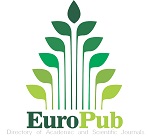English Media and The Representation of Islam: A Critical Discourse Analysis
Abstract
This research paper aims to study the portrayal of Islam in English media employing critical discourse analysis theory. The purpose of the research is to reveal the attitudes, prejudices, and power relations in media discourse regarding Islam and Muslims. This research, through the examination of a sample of news articles, television broadcasts, and online media content, has been able to discern patterns and discourses that help build up this monolithic and negative perception of Islam. The study indicates that commonly, Islam is associated with violence, extremism, and cultural integration thus fueling Islamophobia and stereotype. Further, the study analyses the effects of such media portrayals on the community perceptions, policy formulation and the Muslims’ experiences. The paper further brings out the point that these portrayals are not only the mirror images of societal prejudices that exist in a society but they actively contribute to the reinforcement of such prejudices. The paper calls for better and fair portrayals of Islam in the media as a way of enhancing tolerance and integration in the ‘new’ diverse society. The findings of this research therefore play an important role in providing insights into media representation, identity, and power relations that are crucial for a positive change towards a more civilized society and media culture.
Keywords: Discourse Analysis, English Media, Islam, Stereotype, Violence








